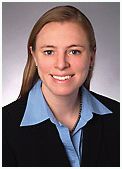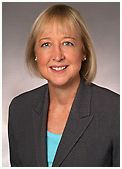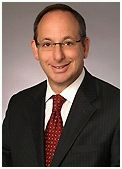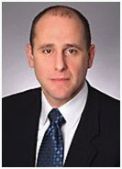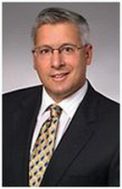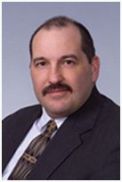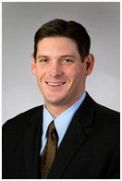The U.S. patent system was created by the U.S. Constitution, Article 1, Section 8, Clause 8 (1789), which states: "The Congress shall have Power...To promote the Progress of Science and useful Arts, by securing for limited Times to Authors and Inventors the exclusive Right to their respective Writings and Discoveries".
A. The Role of Patent Laws
The patent system is intended to spur innovation by providing inventors with limited rights of exclusivity over their inventions. All industrialized nations have a patent system in place. Without a patent system, individuals and businesses would be less likely to undertake research and development, since they would be unprotected against competitors seeking to copy their successful ideas and products.
B. Types of Patent
There are three general types of U.S. patent: utility, design, and plant.
1. Utility Patents. Also called functional patents, utility patents encompass the function or operation of a machine or device. A utility patent issuing from an application filed after June 7, 1995 has a term of enforceability that runs from the date of issuance to 20 years from its earliest effective U.S. filing date, provided that periodic maintenance fees are paid. Certain occurrences during the prosecution of the patent application may give rise to a patent term extension. Utility patents can be obtained in the following categories:
a. Machines or Apparatuses. Includes devices in which components interact, for example automobile transmissions, machine tools, appliances, etc.
b. Processes. Includes methods or procedures used in the manufacture of a device or product, and encompasses computer software used to produce some tangible result.
c. Articles of Manufacture. Includes articles without moving parts, for example soap dishes, water-spray nozzles, and bottles.
d. Compositions of Matter. Includes compounds and mixtures such as plastics, pharmaceutical compounds, and metal alloys. This category also encompasses certain types of life forms, including single-cell and multiple-cell organisms and vertebrate animals. For example, Harvard University was granted a patent on a genetically engineered mouse (see U.S. Patent No. 4,736,866).
e. Business Methods. A term used to describe certain types of processes that relate to doing business. Business method patents have experienced dramatic growth as e-commerce and Internet technologies continue to advance. Since business method patenting recently has been the subject of major legal and commercial developments, a more detailed discussion is warranted.
For many years, inventions regarded as methods of doing business were viewed by the United States Patent and Trademark Office (USPTO) as not patentable. Beginning in the 1980s, however, the USPTO began allowing patents in this area.
The patentability of business methods was confirmed with the issuance of the State Street Bank v. Signature Financial Group decision handed down by the Court of Appeals for the Federal Circuit (CAFC) on January 23, 1998 (149 F.3d 1368 Fed. Cir.).
This decision determined that there was no legitimate basis for withholding patents on methods of doing business. Since that time, a flood of business method patents has been issued, including, for example, the "Name-Your-Own-Price" airline ticket business, made famous by Priceline.com (see U.S. Patent No. 5,797,127), and the Amazon.com patent on "One Click Ordering Process for Internet Purchases" (see U.S. Patent No. 5,960,411).
While it is now settled that methods of doing business are not excluded as patentable subject matter, significant changes in this area are possible in view of a court case entitled In Re Bilski.
The CAFC issued an opinion in Bilski, which specified that a process, such as a business method, must meet the "machine or transformation" test. Under this test a process must be tied to a machine that performs the process or transforms an article to a different state or thing. As such, the CAFC found that a method of hedging risk in the field of commodities trading that was not tied to a machine was unpatentable because the method operated on legal obligations and, therefore, there was no physical transformation. The court did rule that business methods were not per se un-patentable.
Many other considerations differentiate business method patents. Initially, many of these patents were granted, arguably, without sufficient scrutiny, due to the lack of prior art available to examiners at the USPTO. The term "prior art" is used to refer to any public documents or information that describe aspects of the "state of the art" as it existed prior to the invention or effective filing date.
To address this issue, the USPTO has instituted a policy whereby business method patents are examined by two examiners, which in turn significantly increases the application pendency period.
In recent years, allowance rates have been between 10% and 20% for business method patents, which is much lower than the overall rate of about 55%. Nevertheless, the number of applications for business method patents has been strong. From 2006 to 2010, the most recent years for which data is available, the annual number of US patent application filings for business method patents was greater than 9,000.
f. Computer Software. This subject matter was previously deemed to be un-patentable based on Supreme Court holdings that created confusion over whether software was an idea, a formula, or an algorithm. More recent Supreme Court rulings have focused on the patent claims as a whole, versus whether they contain a mathematical formula, in determining whether the overall process or method is patentable. Since then, many computer software applications have been filed, and many have been issued into patents (see Gottschalk v. Benson, 409 US 63 [1972] and Diamond v. Diehr, 450 US 175 [1981]).
While it is still unclear whether claims to computer software are patentable, the Bilski case is equally applicable here. In addition, the CAFC has ruled that claims to a signal with an embedded digital watermark encoded according to a given encoding process do not constitute patentable subject matter.
It should also be noted that various foreign jurisdictions have revisited the question of computer software patentability. Computer software that is separate from an apparatus or machine is considered not to be patentable in most countries outside the United States. In such jurisdictions, protection for computer software is claimed in the form of the apparatus or machine that executes the software.
2. Design Patents. These patents protect any new, original, and ornamental design for an article of manufacture. In contrast to utility patents, which protect the function or operation of a machine or device, design patents protect the appearance of a product. This appearance may be in the form of a shape, color, surface ornamentation, or a combination of these factors.
Design patents protect well-known consumer goods, such as Apple iPods, Nike footwear, and Eclipse mints, to name just a few.
Design patents are becoming increasingly popular. Since 2006, almost 23,000 have been issued annually. The United States leads all countries in design patents, followed by Japan, Taiwan, Germany, and Canada. And the companies most frequently seeking design patent protection include Samsung, Sony, Nike, Procter+Gamble, Goodyear, and Microsoft.
These patents have a term of 14 years from the date of issuance, and unlike the types of patents mentioned above, are not subject to maintenance fees (periodic taxes payable to the USPTO). Generally, design patents are less expensive to obtain than utility patents and issue much sooner. However, the scope of protection is different and often more limited.
There is no requirement that the design be artistic or pleasing to the eye, only that it is primarily ornamental in character. If the overall appearance of the design is dictated by performance, then the design is functional and not entitled to design patent protection. One example is U.S. Design Patent No. D327,636, which disclosed a design for a key blank. In an infringement proceeding, the Court of Appeals for the Federal Circuit (CAFC) held that the shape of the blank key blade was dictated by function, and thus the design was not ornamental. Best Lock Corp. v. Ilco Unican Corp., 40 USPQ2d 1048 (Fed. Cir. 1996). Sometimes, however, articles such as automobile wheels and cell phone housings blend functional and ornamental features, with the design features therefore available for design patent protection.
3. Plant Patents
These patents are available for asexually reproduced plants. A relatively small number are issued each year. And since they define their own highly specialized field of patent law practice, reference should be made to other resources should you desire more information.
4. Judicially Excluded Subject Matter
This includes developments that the courts have defined as outside the scope of the patent types described above. It encompasses:
- Printed matter;
- Naturally occurring substances;
- Ideas, mental processes, or mathematical formulas not involved in any tangible application; and
- Scientific principles or laws of nature (by themselves)
C. Patentability Requirements
In addition to inventions being required to fall within one of the patent types described above, an inventor must show that the invention is novel, is not obvious, and has utility.
1. Novelty
This requirement has various facets and is defined by federal statute (35 U.S.C. §102). As a result of the passage of the Leahy-Smith America Invents Act (AIA) in 2011, beginning on March 16, 2013, two different sets of novelty rules became applicable when evaluating patent applications. Whether AIA or pre-AIA novelty rules apply will depend on the patent application's effective filing date (i.e., before or after March 16, 2013).
a. Pre-AIA Novelty.
The pre-AIA set of novelty rules refers to the date of invention versus the date of filing. Therefore, for pre-AIA patent applications, the patent will be denied or an issued patent will be found invalid if, before the date of invention, the invention was:
- Known or used by others in the United States;
- Patented or described in a printed publication anywhere in the world;
- Described in a patent that resulted from an application filed before the date of invention; or
- Invented in the United States by another who did not abandon, suppress, or conceal it.
Again, note that these novelty requirements refer to the date of invention. If another's patent or publication is asserted as grounds for a patent application's rejection, or as the basis of a challenge to the validity of a patent, the inventor may have to prove that his or her date of invention predates that of the challenger.
This is one of the reasons why inventors need to keep complete, accurate, witnessed records to establish when the invention was made and when it was demonstrated as useful for its intended purpose—in other words, "reduced to practice."
The novelty requirement also includes rules (also found in 35 U.S.C. §102) which preclude patentability if, more than one year prior to the date that the application was filed:
- The invention was patented or described in a printed publication anywhere In the world;
- The invention was in public use (non experimental) in the United States;
- The invention was on sale (which includes offers for sale) in the United States; or
- The applicant filed a foreign patent application granted before the U.S. application filing.
b. AIA Novelty.
The AIA set of novelty rules refers to the application's effective filing date versus the date of invention. Because of this, the AIA scheme has sometimes been referred to as a "first-to-file" system and a race to the Patent Office. The AIA, however, still requires that the applicant be a true inventor of the claimed subject matter, and cannot have derived or learned of the invention from another. The AIA system is therefore more accurately referred to as a "first-inventor-to- file" system.
Under the AIA, the patent will be denied if, before the effective filing date, the claimed invention was:
- Patented;
- Described in a printed publication;
- In public use;
- On sale;
- Otherwise available to the public;
- Described in an issued patent, the application for which was filed by another before the effective filing date; or
- Described in a published patent application, which was filed by another before the effective filing date.
The AIA provides several exceptions for disclosures made one year or less before the claimed invention's effective filing date.
Specifically, exceptions are provided for instances where (a) the disclosure was made by the inventor, a joint inventor or another who obtained the disclosed subject matter from the inventor or joint inventor, and (b) before the disclosure, the disclosed subject matter has been publicly disclosed by the inventor, joint inventor or another who obtained the disclosed subject matter from the inventor or joint inventor.
Additional exceptions are provided for situations where the disclosure appears in a patent or published patent application and (a). The disclosed subject matter was obtained from the inventor or joint inventor, (b). The disclosed subject matter was publicly disclosed by the inventor, joint inventor or another who obtained the disclosed subject matter from those individuals prior to the patent's or published patent application's effective filing date, or (c). the disclosed subject matter was owned or subject to an obligation of ownership by the same person not later than the claimed invention's effective filing date.
In some instances, a joint research agreement may allow the disclosed subject matter to be treated as having been commonly owned.
c. Common Concepts.
Both the AIA and pre-AIA rules include the concepts of "public use" and "on sale," but do not specifically define them. Since the same terms are used, it is anticipated that, under the AIA, the meanings established by the courts for these concepts will continue to apply. While a complete analysis of what constitutes public use or on sale is beyond the scope of this book, these "statutory bars to patentability" may turn on whether the inventor has begun a "commercial exploitation" of the invention. This then starts the clock on a one-year grace period, within which the inventor must either file a U.S. patent application (or an international PCT patent application designating the United States) or forever lose the ability to patent the invention.
A further note regarding published documents: Even an obscure manuscript written in a foreign language can serve to bar the patentability of an invention or invalidate an issued patent. Under the AIA, whether such a document or other activity or event can be considered as prior art may hinge on whether the document, activity or event is considered to be "otherwise available to the public." This is one reason why patentability searches are, by their very nature, limited in scope and cannot be considered as an absolute assurance that an invention is patentable.
2. Non-Obviousness
Another requirement of patentability is that an invention must not have been "obvious" to one of ordinary skill in the art (stated by 35 U.S.C. §103) at the time of invention (for pre-AIA applications) or prior to the effective filing date (for AIA applications). This requirement is far easier to state than it is to describe.
In determining obviousness, the patent examiners and courts attempt to put themselves in the shoes of a person of ordinary skill in the art, and assume that this person is aware of all the relevant prior art at the time of invention or before the patent application was effectively filed.
The courts often apply a three part test in determining obviousness as established by Graham v. John Deere (383 US 1, 17 [1966]), an important U.S.
Supreme Court patent decision involving the invention of a type of agricultural plow. This test establishes the scope and content of the prior art, the level of ordinary skill in the art, and the differences between the prior art and the claims at issue. A number of additional factors referred to as "secondary considerations" are sometimes evaluated to show an invention was not obvious at the time of its creation. These considerations may include:
- The dramatic commercial success of an invention;
- Showing that others had attempted to address the problems solved by the invention and failed;
- The existence of a long-felt unfulfilled need for the invention; and
- That the prior art would tend to teach away from the invention.
In reaching a determination of whether a new concept is obvious in view of the prior art, it is important to note that the USPTO and the courts are permitted to take individual examples of prior art and combine them to find that an invention is not patentable. There is a requirement, however, that the combination must be reasonable and not contrary to the prior art itself.
3. Utility
The requirement of utility means that the invention must have a useful purpose and not be solely for implausible or immoral purposes. This requirement is rarely relied upon as a basis for denying patentability.
As previously discussed, under U.S. patent law, only an inventor can seek to patent his or her invention and, hence, a patent cannot be granted to a third party who, rather than invents, learns of or derives the invention from another and is merely the first person to race to the Patent Office. In those instances, pre-AIA and AIA procedures exist for the true inventor to establish his or her rights to the patent. Pre-AIA those procedures are known as "interference proceedings," and under the AIA they are known as "derivation proceedings." A detailed discussion of each is well beyond the scope of this book and depends heavily on the provable facts surrounding the situation.
D. Types of Utility Patent Application
Original U.S. patent applications can be classified into four groups:
Non-provisional, original provisional, reissue, and international PCT.
1. Non-provisional Patent Applications constitute the vast majority of U.S. patent applications. Often referred to as a "regular" or "formal" application, a non-provisional application is reviewed by a USPTO patent examiner. If it claims a patentable invention, it will ultimately mature into an issued patent.
Non-provisional applications can claim the benefit of the filing date of one or more earlier filed U.S. applications, as well as the date of a foreign patent application filed no more than one year before the non-provisional application's filing date. A non-provisional application is usually published by the USPTO 18 months after its earliest claimed filing date.
2. Provisional Patent Applications also may be filed with the USPTO. This type of application is used to establish a priority of invention; in other words, to secure a filing date for a given disclosure of the invention. By operation of law, the provisional patent application becomes automatically abandoned on the first anniversary of its filing date, and is never itself either examined or published by the USPTO. To benefit from the filing of a provisional patent application, a non-provisional patent application must be filed no more than 12 months after the provisional patent application's filing date, and must make an explicit reference to the provisional patent application filed earlier. As long as a non-provisional patent application is properly filed within the 12-month period, the provisional patent application filing date is used as the later application's effective filing date. That date, however, only applies to inventions adequately described in the provisional patent application.
A word of caution here: To properly serve as a priority document, a provisional patent application must include a written description, perhaps featuring drawings, that enables a person of ordinary skill in the art to understand and practice the invention. The "best mode" requirement also applies and refers to the inventor's obligation to describe the best way he or she knows for practicing or carrying out the invention. Any additional or new subject matter presented in the later filed non-provisional patent application will not be entitled to the provisional patent application's earlier filing date.
3. Reissue Patent Applications are patent applications filed to correct a "defect" in an issued patent. A "narrowing" reissue seeks to narrow the scope of one or more claims, such as claiming more than the patentee (patent owner) had a right to claim. It can be filed at any time prior to the expiration of the patent's term. A "broadening" reissue seeking to expand the claims coverage must be filed with the USPTO no more than 2 years from the date upon which the patent was originally issued.
4. International PCT Patent Applications are patent applications filed under the Patent Cooperation Treaty (PCT). In a PCT application, the applicant designates one or more of the many PCT member countries, encompassing virtually all of the industrialized world, to preserve the option to later file the PCT application in any designated country. The PCT patent application can be filed in any one of the many national patent offices, subject to rules relating to the applicant's nationality and residency.
The PCT application must be filed no later than the one-year anniversary of the earliest related patent application. If the PCT application designates the United States, then it is deemed by law to be an application for a patent filed in the United States as of its international filing date. The differences between the processing of international PCT patent applications and U.S. non-provisional patent applications is extensive and beyond the scope of this book. It should be noted, however, that an international PCT patent applicant must take further action in the United States and other countries in order to obtain patents in those countries. Generally, those actions must be taken no later than 30 or 31 months from the earliest claimed priority date, depending on the country.
E. Procedures for Obtaining a U.S. Patent
1. Patent Searches. The process of obtaining a U.S. patent begins with the preparation of a patent application. Generally speaking, it is desireable to conduct a patent search before preparing an application. This search seeks to find issued patents and other published articles that are related to the invention.
If the invention appears patentable after an inspection of the prior art, then the application may proceed.
Note that there is no requirement that a patent search be conducted before filing a patent application. There are often cases where inventors are very familiar with the activities of their competitors and of the market in their area of business.
With this knowledge, they feel confident that they are aware of the most relevant prior art without having to conduct a search.
2. Preparing a Patent Application. An inventor can prepare, file and prosecute a patent application, which is known as proceeding "pro se." However, the USPTO urges applicants to seek out the assistance of a patent agent or patent attorney, who is registered to practice before the USPTO.
For both non-provisional and provisional utility patent applications, the application includes a written "specification" that is typically divided into the following sections:
- Title of the Invention.
- Cross-Reference to Related Applications, which specifically identifies any and all prior U.S. patent applications, both provisional and non-provisional, from which the applicant claims may benefit.
- Background of the Invention, which describes the "technical field" of the invention and provides information such as the known technology, problem solved by the invention and, perhaps, the failures of the prior art to either recognize or adequately address such problems.
- Summary of the Invention, which provides a brief summing up or general statement of the invention, and often points out the invention's advantages and how it solves a problem or design challenge.
- Brief Description of the Drawings, which describes the subject matter illustrated in one or more accompanying figures.
- Detailed Description of the Invention, which describes the best mode of practicing the invention and provides a sufficiently detailed disclosure to enable those skilled in the art to duplicate and practice the invention, with cross-references to any drawings provided.
- Claims, which seek to describe the extent of the invention to be protected. A non-provisional patent application must include at least one claim; by statute, no claims need to be presented in a provisional patent application. This is the critical part of the patent application and defines the legal scope of protection being sought. These claims are not unlike a legal description of real estate.
- Abstract of the Disclosure, which summarizes the disclosed embodiments of the invention to facilitate searching for relevant prior art.
- Drawings, which illustrate examples described in the detailed description section.
- Oath or Declaration, in which each identified inventor states that he or she is an inventor of the subject matter recited in the accompanying claims and that they are making or authorizing the application for patent.
The non-provisional patent application typically is published for public viewing once 18 months have elapsed from the effective filing date claimed by the applicant. Once published, all papers related to the application, including those of any related U.S. patent applications identified, are available for public inspection.
In certain circumstances in which foreign patent filing is not sought, the applicant can request that the application not be published.
Unlike utility patent applications, U.S. design patent applications are not subject to publication at 18 months. Instead, design patent applications are published only when they actually issue as patents.
3. Patent Office Examination Procedures. After the patent application is filed and the USPTO assigns an application number and filing date, a non-provisional patent application is assigned to a patent examiner. This examiner conducts an independent patent search of the invention using prior art materials available to the examiner, including any prior art the applicant has furnished.
Specifically, the rules require the applicant and the patent attorney/agent prosecuting the application to disclose to the patent examiner all information "material to patentability" of an invention claimed in a non-provisional application.
This includes information of which they become aware while the patent application is pending before the USPTO. Information may be provided to the patent examiner in the form of an Information Disclosure Statement (IDS).
The examiner evaluates the application in view of the prior art and checks for compliance with various formal requirements.
Often, the claims presented in the application are initially "rejected" in a communication called an Office Action. The applicant's patent attorney or patent agent, often with inventor assistance, must then file a reply to the examiner, pointing out the reasons why the claims, either as originally filed or with appropriate amendments that may include the presentation of additional new claims, should be allowed. Generally, if the application is rejected a second time, the applicant must either appeal the decision or request continued examination to avoid abandonment of the application.
In 2011, the average time to obtain a patent was about 34 months from the application filing date to patent issue date. Note, however, that in certain technology areas, and particularly in the biotechnology, computer software, and business method fields, average pendency is in excess of that average. While the USPTO is working to reduce the pendency period, the average time in 2011 for issuance of a first Office Action on the merits of the application was 28 months.
In order to protect against invention infringement during these delays, U.S. patent laws provide provisional remedies—generally a reasonable royalty—for infringement of claims that were both published in a pending patent application and subsequently issued in "substantially identical" form in a U.S. patent.
To have this remedy available, the alleged infringer must have had actual knowledge of the published patent application.
F. Nature of the Patent Right
A U.S. patent gives the inventor or patent owner the right to exclude others from making, using, selling, offering to sell, or importing the invention. A patent does not provide the inventor with an absolute right to manufacture or use an invention. For example, an invention that is an improvement of an invention patented by another does not give the improvement's inventor the right to make, use, or sell the entire invention. In such cases it may be necessary to obtain a license from the owner of the basic or "dominant" patent encompassing the invention.
G. General Remarks About Patents
There are a number of commonly held misconceptions about patents. Here is some clarification:
1. A patent is not a prerequisite to being able to manufacture or use a new product or invention. Many products are sold which are not patented.
2. An invention does not need to be perfected before the filing of a patent application. In fact, an actual "reduction to practice" (building of the invention) is not required in order to complete the act of invention and apply for a patent.
The filing of a patent application containing a full and clear disclosure of the invention is deemed a satisfactory substitute for an actual reduction to practice.
3. Inventors often ask what the scope of their patent is. Many have heard war stories in which a patent owner was unable to stop a competitor from selling a product since it had a very minor variation from the patented device.
The scope of a patent depends on the invention itself, the prior art, and the manner with which the invention is described by the patent's claims.
Some inventions are of the pioneering or breakthrough variety and constitute a dramatic departure from the prior art. These inventions are often awarded patent claims that are quite broad in scope and, as such, may impede virtually all unauthorized competition. Another group of inventions are improvements of known devices or processes. These inventions are awarded claims limited to the improvements or departures from the prior art. In cases where such departure is minor, there may be numerous, non infringing, alternative designs available to competitors. While such patents have a limited scope, even these can have considerable commercial value where, for example, the improvement is related to a more cost-effective device or process, or provides performance benefits.
4. Inventors and the public at large often assume that all patents are worth extraordinary sums of money. While many are extremely valuable, most do not reach commercial reality. The decision to patent an invention should be based on a realistic expectation of its value, and should be part of an overall business plan or objective.
5. A patentable invention may be a combination of existing components or elements. In fact, most inventions are a collection of known components that operate individually in a well-known manner. The combination of elements, however, may produce new and perhaps unexpected attributes.
H. Patent Infringement
Patent infringement occurs when a person or entity, without the patent owner's authority, makes, uses, sells, offers to sell, or imports the invention as claimed in a U.S. patent, during its unexpired term. Infringement requires that each and every element (or the equivalent) of at least one claim of an unexpired patent be present in the accused product or process. Infringement also occurs when imported goods are manufactured outside the United States by a process patented in the United States.
Infringement can be direct or contributory. Contributory infringement may occur when one sells a special component of a patented invention. A person who actually induces another to infringe is also considered to be an infringer. The personal liability of corporate officers can be shown in those cases where active involvement in the infringement is illustrated.
1. Utility Patent Infringement. Monetary damages for infringement include lost profits attributed to the infringement or a reasonable royalty for the infringing goods or processes. Preliminary and permanent injunctions also are available to prevent continued infringement. Where infringement is willful, treble (tripled) damages, attorneys' fees, and costs can be recovered.
2. Design Patent Infringement. Unlike utility patent infringements, the infringer's profits are among the remedies available in cases of design patent infringement. Additional remedies include lost profits and a reasonable royalty, along with attorneys' fees, if applicable.
In order to prove design patent infringement, an accused article is compared to the design (in all of the figures of the patent) and must satisfy the "Ordinary Observer Test" set forth by the Supreme Court over 125 years ago. Under this test, if an ordinary observer (or purchaser) is deceived into confusing the accused article with the patented design, then the design is infringed. The accused article need not be identical. In the words of the Supreme Court, "[I]f, in the eye of an ordinary observer, giving such attention as a purchaser usually gives, two designs are substantially the same, if the resemblance is such as to deceive such an observer, inducing him to purchase one supposing it to be the other, the first one patented is infringed by the other." Gorham Mfg. Co. v. White, 81 U.S. 51 (1871)
I. Foreign Patent Protection
Virtually all industrialized nations are signatories to the Paris Convention of 1883. This treaty establishes that if a utility patent application is filed in one of the signatory countries within one year of a first filing in another country, then the later filed application benefits from the earlier filing date. (For a design patent application, the relevant "convention" period is 6 months.) Therefore, if an applicant files a patent application in the United States, and files one or more foreign applications within one year of the U.S. filing date, the foreign applications will benefit from the U.S. filing date.
This provision of priority is very useful given that most countries outside the United States have so called "absolute novelty" rules. These rules state that the patent application filing date must precede any public disclosure of the invention throughout the world. These countries do not provide the one-year "grace period" that U.S. laws provide. U.S. patent application filing deadlines are often primarily dictated by the desire for a filing date prior to public disclosure in order to preserve foreign patent rights.
The America Invents Act limits the grace period to material disclosed by the inventor of the later patent application rather than to information independently disclosed by others, meaning that the U.S. patent law has become more streamlined with the patent laws of most foreign countries. However, because most countries do not provide a grace period at all, it is important to file a first patent application before sharing the invention with third parties if foreign patent filings are intended.
Applicants who file foreign patent applications should be aware that statements made during foreign prosecution may be used by U.S. courts to define the scope of U.S. patent claims. Thus, care should be taken to coordinate U.S. and foreign prosecution of related patent applications.
There are regional as well as international patent application procedures available to patent applicants seeking to obtain foreign protection for their inventions.
In addition to the Patent Cooperation Treaty (PCT) application process, under the laws of the European Patent Convention a single patent application may be made by an applicant to protect the invention throughout Western Europe, providing significant savings in application filing fees. Currently, a European patent splits into individual national patents upon granting, so that enforcement of a European patent needs to be taken to the national courts of the individual countries. A unitary European patent system is currently in development that will allow for centralized patent enforcement if the patent owner chooses to maintain a unitary patent instead of individual national patents.
Some countries also offer utility models, sometimes called "Petty Patents." The term "petty " originates from the French word "petit" meaning "small." Utility models can claim the priority date of a patent application and may, depending on the country, provide a grace period where regular patent applications do not. While utility models include a description, claims, and drawings much like a patent application, they are mostly limited to a term of 10 years. Utility models are typically not examined, unless the owner attempts to enforce them. The protectable subject matter varies by country, but physical devices are protectable through utility models, while processes are typically excluded. Utility models are usually granted within one year of the filing date and save expenses because they do not require an extensive substantive examination in order to become effective. They are a viable alternative in technical areas, in which licensing is more common than litigation, where technology advances at such a fast pace that a 20-year protection is not needed.
J. Challenges to Patent Validity
The AIA introduced two new procedures that enable a third party to challenge the validity of an issued patent without having to go through court litigation.
These procedures are known as Post Grant Review and Inter Partes Review.
While Inter Partes Review may be sought against any issued patent, Post Grant Review may be sought only against a patent that issues under the auspices of the AIA; in other words, only a patent that has an effective filing date after March 16, 2013.
A brief synopsis of these new proceedings will give you an initial understanding of the benefits and disadvantages of each.
1. Post Grant Review If a third party believes that a recently issued patent is invalid, the third party may file for Post Grant Review. To do so, they must file a petition within nine (9) months of the patent's issuance.
There are many procedural and documentary aspects that must be set out in the petition, including:
- Identifying the real party of interest;
- Identifying the claims asserted as being invalid;
- Identifying the grounds supporting the challenge for each claim;
- Providing evidence to support the challenge; and
- Paying a fee to the USPTO.
The grounds that can be asserted in a Post Grant Review are broad. Thus, a petitioner may assert that the patent does not comply with the statutory subject matter, that the invention is not novel, that it is not unobvious, that it is not enabled, or that the written description requirement in the patent was not complied with. In other words, substantially any basis upon which a patent examiner could have rejected the application for patent is available for the petitioner's assertion. However, one ground is not available, namely that the application did not comply with the best mode requirement (wherein the applicant describes the best way of carrying out the invention).
Evidence supporting the challenge can include prior art such as patents or printed publications, as well as affidavits and declarations of supporting facts and opinions. If the submitted evidence makes it "more likely than not" that at least one of the patent's claims is unpatentable, or it presents a novel or unsettled legal question important to other patents/applications, Post Grant Review will be instituted.
Once instituted, the Review is conducted before the Patent Trial and Appeal Board (PTAB). During the proceeding, some limited discovery is available to the petitioner and the patentee. Additionally, the patentee has an opportunity to amend the patent, including cancelling the challenged claims and proposing a reasonable number of new claims. The amendment, however, is not permitted to broaden the patent's claims.
If by a preponderance of the evidence a claim is determined to be invalid, it is stricken from the patent. If all claims are determined to be invalid, the entire patent is deemed invalid.
The fees associated with Post Grant Review are substantial and are intended to reflect some (but certainly not all) of the USPTO's costs for conducting the proceeding. At the time of this writing, the total Post Grant Review fees (review request and post institution) are $35,800.
Post Grant Review proceedings are intended to be a quicker and cheaper adjudication of a patent's asserted invalidity. The determinations under Post Grant Review are to be concluded within 12 months after the institution of the proceeding, which is far shorter than the timeline for court litigation. The PTAB's determination is appealable directly to the CAFC.
There is a drawback, however, related to the legal principle "estoppel." If a final decision is reached in a Post Grant Review proceeding, the petitioner will be "estopped" (prevented) from asserting a claim's invalidity in subsequent litigation or International Trade Commission (ITC) proceedings on any ground that the petitioner raised--or reasonably could have raised--during the Review. If the parties settle prior to a final decision, however, no estoppel applies.
2. Inter Partes Review. In many respects, Inter Partes Review is similar to Post Grant Review. One difference is that if a third party believes that any issued patent is invalid, the third party may file for Inter Partes Review. However, a petition for Inter Partes Review cannot be filed until either the nine-month period for filing for Post Grant Review has expired or any instituted Post Grant Review proceeding has concluded.
The procedural and documentary requirements of Inter Partes Review generally mirror some of the Post Grant Review requirements, such as:
- Identifying the real party of interest;
- Identifying the claims asserted as being invalid;
- Identifying the grounds supporting the challenge for each claim;
- Providing evidence to support the challenge; and
- Paying a fee to the USPTO.
Grounds that can be asserted in an Inter Partes Review, however, are more restrictive, pertaining only to those grounds that could have been raised by an examiner under 35 U.S.C. 102 and 103—the novelty and obviousness provisions of the statute. Evidence supporting the challenge likewise can be in the form of prior art such as patents or printed publications, affidavits and declarations of supporting facts and opinions.
If, based on the submitted evidence, there is a "reasonable likelihood of success" with respect to at least one claim, the Inter Partes Review will be instituted. This standard of initial review is higher than the standard for Post Grant Review.
Once instituted, the PTAB conducts the proceedings, during which limited discovery is available and the patentee has an opportunity to amend the patent, including cancelling challenged claims and proposing new claims. Broadening claim amendments is not permitted.
If by a preponderance of the evidence it is determined that a claim or all of the claims are invalid, the invalid claim or entire patent is stricken or revoked.
The USPTO fees associated with Inter Partes Review are less than those for Post Grant Review, but are still substantial. At the time of this writing, the cumulative total of the review request and post institution is $27,200.
Determinations under Inter Partes Review are quick, within 12 months after the institution of the proceeding. Final determinations are similarly appealable to the CAFC.
Estoppel does also apply to final decisions in Inter Partes Review proceedings. Accordingly, a final decision will bar a petitioner from asserting a claim's invalidity in a subsequent Inter Partes Review proceeding, civil litigation or ITC proceeding on any grounds that the petitioner raised, or reasonably could have raised. Estoppel does not apply if the parties settle prior to a final decision.
To find out more please access our IP Primer page.



